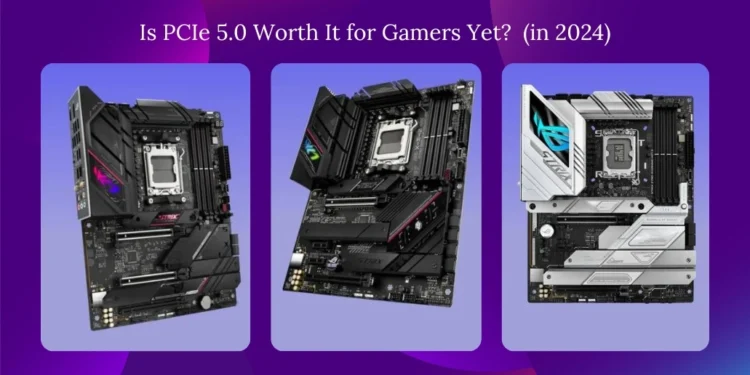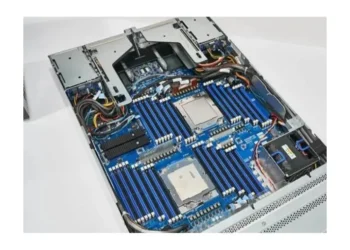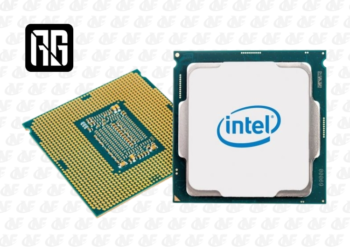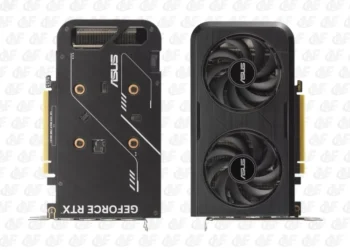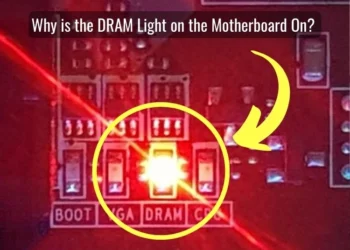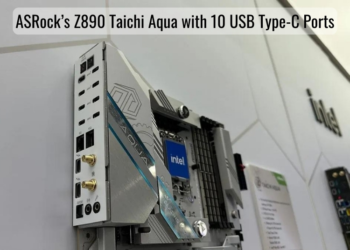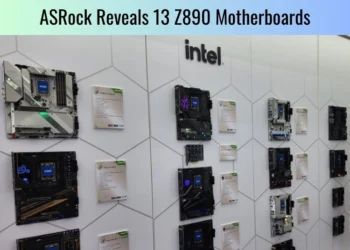It’s been over four years since the introduction of PCIe 5.0, but is it essential for gaming rigs in 2024? Let’s dive deeper into real-world PCIe 5.0 performance, adoption challenges across hardware, and whether it delivers value today.
Speed vs Practicality
On paper, PCIe 5.0 doubles the bandwidth of PCIe 4.0 with speeds up to 32GT/s. But do gamers need this extra throughput? Several storage reviews found minimal differences between PCIe 4.0 and 5.0 SSDs in everyday tasks and games.
PCIe 4.0 vs. 5.0 Performance Tests
A side-by-side comparison of the Teamgroup T-Force Z540 PCIe 5.0 SSD and Teamgroup MP44 PCIe 4.0 SSD in Disk Bench and Final Fantasy XIV yielded near-identical results. Copy and read tests showed negligible variance between the drives in megabytes per second.
Game load and level transition times differed by just a hundredths of a second. The gap in real-world performance between PCIe 4.0 and 5.0 storage is significant for regular users and gamers.
CPU and GPU Limitations
To unlock PCIe 5.0’s full potential, high-end hardware is required. However, current CPUs struggle to fully leverage their bandwidth due to limited native PCIe 5.0 lanes. Ryzen 7000 series chips allot 16 lanes to the primary GPU, with the rest split between M.2 slots and chipset. Similarly, Intel 14th Gen Desktop CPUs designate only 16 lanes of PCIe 5.0, with the others as PCIe 4.0.
Additionally, today’s graphics solutions max out at PCIe 4.0. Nvidia’s RTX 4000 and AMD’s RX 7000 lineups employ PCIe 4.0, not PCIe 5.0. Next-gen GPUs may adopt PCIe 5.0’s later, but widespread compatibility will take time. With no GPUs supporting PCIe 5.0 presently, actual performance is bottlenecked.
Heat and Cost Considering
PCIe 5.0 SSDs attain significantly higher temperatures than PCIe 4.0 drives under load, and their price tag is also steeper. A 1TB PCIe 5.0 model can cost $150-200, double that of a comparable 2TB PCIe 4.0 SSD.
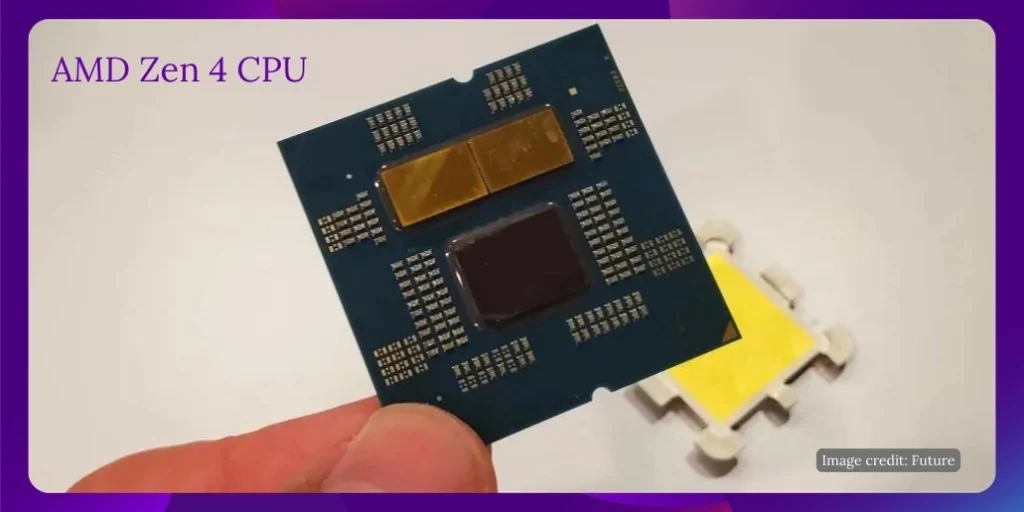
Increased power/thermal demands then require pricey cooling solutions as well. For negligible gaming benefits, PCIe 5.0’s value proposition remains questionable.
Motherboard Headaches
Motherboard designers need help optimizing PCIe 5.0 compatibility, too. On some Intel Z790 b, the primary M.2 slot cuts the GPU to x8 mode rather than x16 bandwidth.
Likewise, lower-end AMD X670 boards hinder PCIe 5.0 adoption by restricting slots to PCIe 4.0 speeds. These limitations compound obstacles for the new standard to shine.
Is PCIe 5.0 Worth It for Gamers Yet?
Four years since its launch, PCIe 5.0 adoption across the PC ecosystem remains in its early stages. Lack of CPU/GPU optimization, motherboard design bottlenecks, high costs, and insignificant gaming advantages show that PCis Ie 4.0 is sufficient today.
Only once GPUs fully support PCIe 5.0, thermal issues are addressed, costs decrease, and optimization matures will its advantages outweigh the hurdles. For now, PCIe 5.0 offers minimal benefit over PCIe 4.0 for most gamers.

The Obstacles Obstructing PCIe 5.0 Uptake
Let’s analyze the primary technical caveats currently inhibiting PCIe 5.0’s from reaching its true potential:
CPU Lane Limitations
While AMD Ryzen 7000 and Intel Raptor Lake allocate 28 and 20 PCIe 5.0tively, these must be split between multiple components. Just 16 lanes go to the primary GPU on AMD chips, with the rest truncated further across M.2 slots and chipset interfaces. This restricts periphery expansion ability.
Lack of PCIe 5.0 GPUs
No current generation high-end graphics solutions employ PCIe 5.0’s. NVIDIA and AMD adhere to PCIe 4.0 for RTX 4000/RX 7000 because it isn’t a bandwidth bottleneck yet. Widespread PCIe 5.0 GPU adoption could take another product cycle or more.
Sudden Thermal Demands
Controllers and NAND chips within PCIe 5.0 SSDs strain to meet the standard’s doubled throughput requirements. This can heat output under sustained loads that slower PCIe 4.0 drives avoid. Dedicated cooling investment is now required to prevent throttling.
Inability to Reach True Potential
Motherboard vendors face difficulties optimizing for PCIe 5.0’s. Issues specification M.2 slots halving GPU bandwidth on Intel boards or cost-saving B650 restrictions on AMD counter the standard’s potential performance increases in reality. Full-fat implementations are still elusive.
Unreasonable Price Tag
Early PCIe 5.0’s products are up over 50% in cost versus equivalent PCIe 4.0 models. A $150-200 1TB SSD is excessive for a benefit gamers may never notice. Premium thermals add to the price, which can’t justify the marginal gaming gains presently.
Substantial Maturation is Still Required
With improvements in CPUs, GPUs, motherboards, storage controllers, and falling costs – PCIe 5.0 will eventually attain its marketed speeds. But today, hardware faces too many struggles to deliver PCIe 5.0’s promised long-term “future-proofing” capabilities for gaming PCs. Its projected benefits remain years away for most users, rendering adoption a current.
Will PCIe 5.0 Ever Become Useful for Gamers?
While PCIe 5.0’s doubled bandwidth makes for great marketing, its value to gaming systems in 2024 is questionable at best. Minuscule performance deltas, compatibility headaches, extreme costs, and lack of GPU support show PCIe 4.0 adequate for the foreseeable future.
Only once PCIe 5.0 achieves widespread harmony in desktop PCs, thermal/practical concerns are addressed, costs drop noticeably, and games near PCIe 4.0’s bandwidth limitations will an upgrade path be compelling. For now, focus on a durable PCIe 4.0 build and wait for PCIe 5.0 to mother before committing. The marginal gains simply aren’t worth gamers’ investment in 2024.

